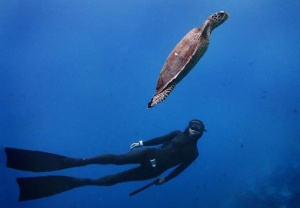St Helena boosts diving credentials with marine protection area

A 200 nautical mile maritime zone in the seas around St Helena Island in the South Atlantic has been designated a Marine Protected Area, boosting the island’s offering as a diving destination.
St Helena’s impressive marine environment is home to over forty endemic species and supports a diverse array of marine life.
What’s more, whale sharks congregate in such numbers between January and March each year to afford a rare one in 16 chance to swim with the largest fish in the sea.
The waters around this sub-tropical island are ripe for discovery, with 14 potential new species identified during a two-year Darwin Marine Biodiversity and Mapping Project completed last year.
This rich marine life, coupled with clear, warm waters and 18th century ship wrecks make the island a must-visit snorkelling and scuba diving destination.
“Perhaps best known as Napoleon’s place of exile, St Helena has been quietly garnering interest over a number of years amongst the dive community thanks to those same watery surrounds that kept the Emperor incarcerated,” said director of tourism, Christopher Pickard.
“The new protected status comes as further proof that St Helena’s aquatic offering is first-rate, reinforcing our decision to target diving as a growth area as part of our tourism strategy.”
Both bottlenose and pantropical spotted dolphin play in these waters, whilst humpback whales are known to visit St Helena from June to October.
Green and hawksbill turtles can often be found around the island and even spotted at the wharf steps in Jamestown.
St Helena’s annual marine awareness month took place in March this year.
A programme of special events was designed to raise awareness of St Helena’s unique marine environment and the importance of marine life to the culture and identity of the Island.

